Enabling the networked soldier (dismounted/mounted) of the future with sophisticated decision aids, Command and Control Battle Management (C2BM), hosted on augmented reality displays, handheld targeting solutions, scopes on computing and display systems; urban scenarios with multi-level building and subterranean features.
The products described in this article are currently in development or in production by Elbit America’s 3,500 employees, at its engineering and manufacturing facilities, across seven U.S. states.
SITREP:
In the wake of the insurgent attack against the relief convoy, Blue forces with support from US Soldiers and Marines cordon and sweep an urban environment.
Red’s insurgent attack against the relief convoy was just the beginning; the pot finally boiled over, and Red’s agent provocateurs were doing everything they could to make life in the exclave unbearable, and the exclave itself ungovernable.

Image courtesy of Breaking Defense.
When Blue and its allies announced they were going in to put an end to the unrest and restore order, it was Red citizens living there that cheered the loudest – and then promptly left town immediately for safer environs.
This foiled Red’s plans to use its people as human shields. For the troops conducting the operation, this made them more confident that any and all military-age males they encountered would be lawful combatants.
As Blue and its U.S. Army and Marine Corps mentors surrounded the mid-sized city at the heart of the exclave, Combat Engineers north of the city began deploying Linear Ground Detection Systems (LGDS) to monitor any and all subterranean activity that might occur between the city and the DMZ several kilometers to the north. Operational within days, buried and surface sensors detected several tunnels leading from the DMZ toward the city, likely being used to arm and sustain the insurgents there.
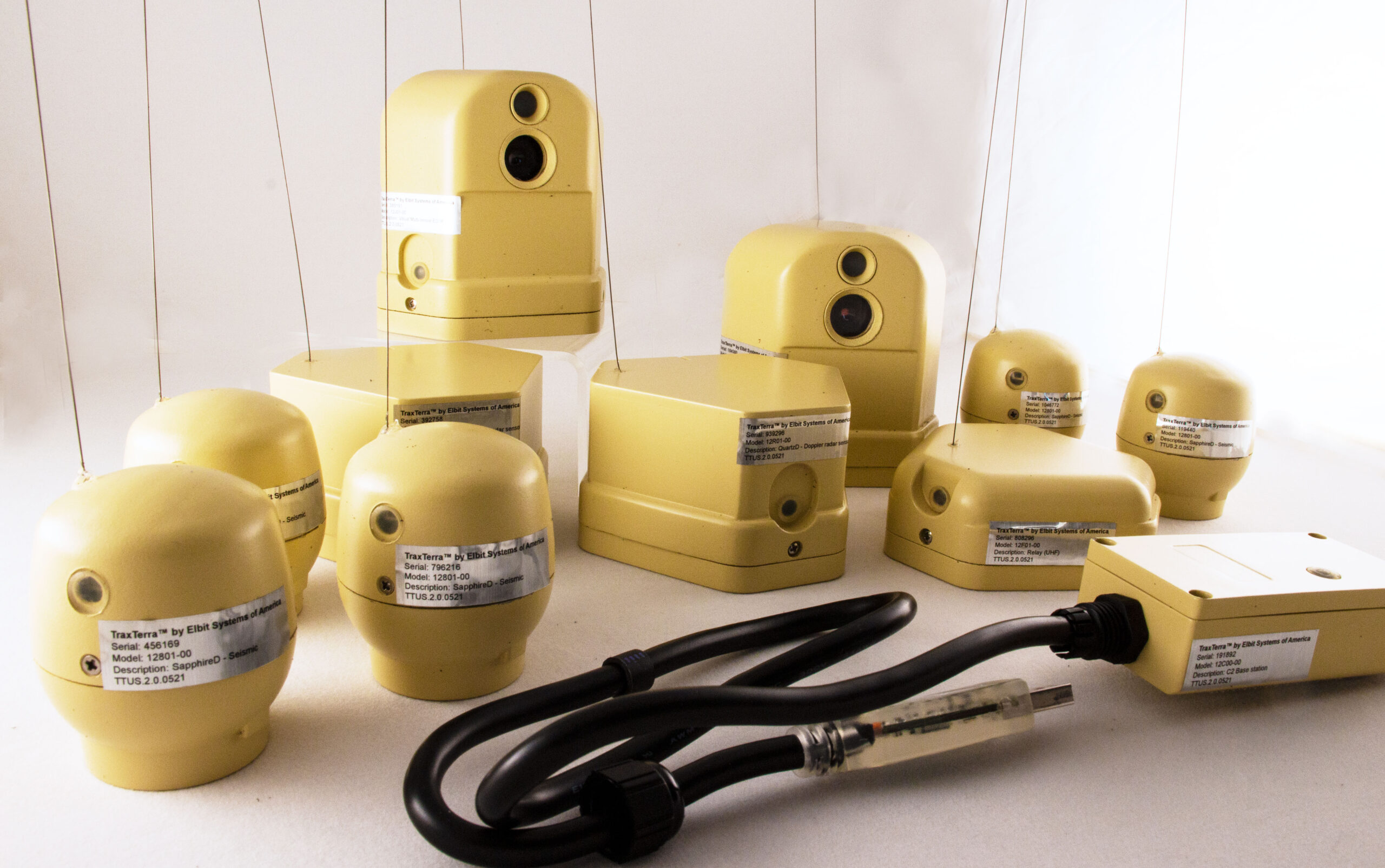
Along with LGDS, Trax Terra unattended ground sensors can be use to detect all manner of service traffic – animal, foot or vehicle – and then using AI alert operators to items of interest while removing irrelevant input. Image courtesy of Elbit America
Concerns about what Red was supplying prompted the immediate collapse of the tunnels, cutting off further support, as well as the most likely avenue of escape for the insurgents. Because of this, the attack on the mid-sized city was accelerated before the surprise and shock of being cut off fully faded.
Seven Blue battalions with coalition support and on-the-ground mentoring by U.S. Soldiers and Marines attacked the mid-sized city from every direction; not at dawn per the original plan, but a few hours before it. American night vision devices helped to guide the way forward. As night turned to day, the helmet-mounted goggles shifted from night to day operation, continuing to provide critical situational awareness by displaying Blue force and target tracking through augmented reality provided to their helmet mounted displays.
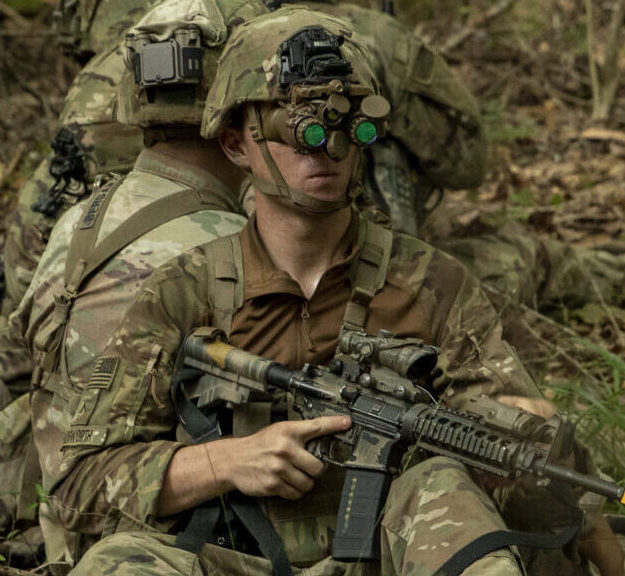
Equipped with lightweight Enhanced Night Vision Goggles – Binocular, the Soldiers enjoyed increased clarity, agility and lethality through the fusion of low-light image intensifying and thermal imaging sensors, ensuring they could see without being seen through a variety of weather conditions including the dark of night or in subterranean darkness. Image courtesy of Department of Defense.
Live video and other sensor data were also provided to the user’s display from networked weapons sights, which allowed them to peek around corners or into holes in walls where it was more prudent to put a rifle barrel than your head.

Handheld Targeting Systems like CLRF-IC, JETS and other variants in development by Elbit America will be able to help put current and future munitions on target, like the new Joint Air-to-Ground Missile (JAGM) seen here launched from a Marine AH-1 attack helicopter. Image courtesy of Department of Defense.
The Red insurgents showed discipline by waiting until Blue forces were inside the city before counterattacking, but this was a miscalculation. They thought that within the confines of the city’s urban landscape, Blue would refrain from using indirect fire in support of its advance. Instead, dismounted troops used hand-held targeting systems (HTS) to direct precision, direct and indirect fire rounds onto targets.
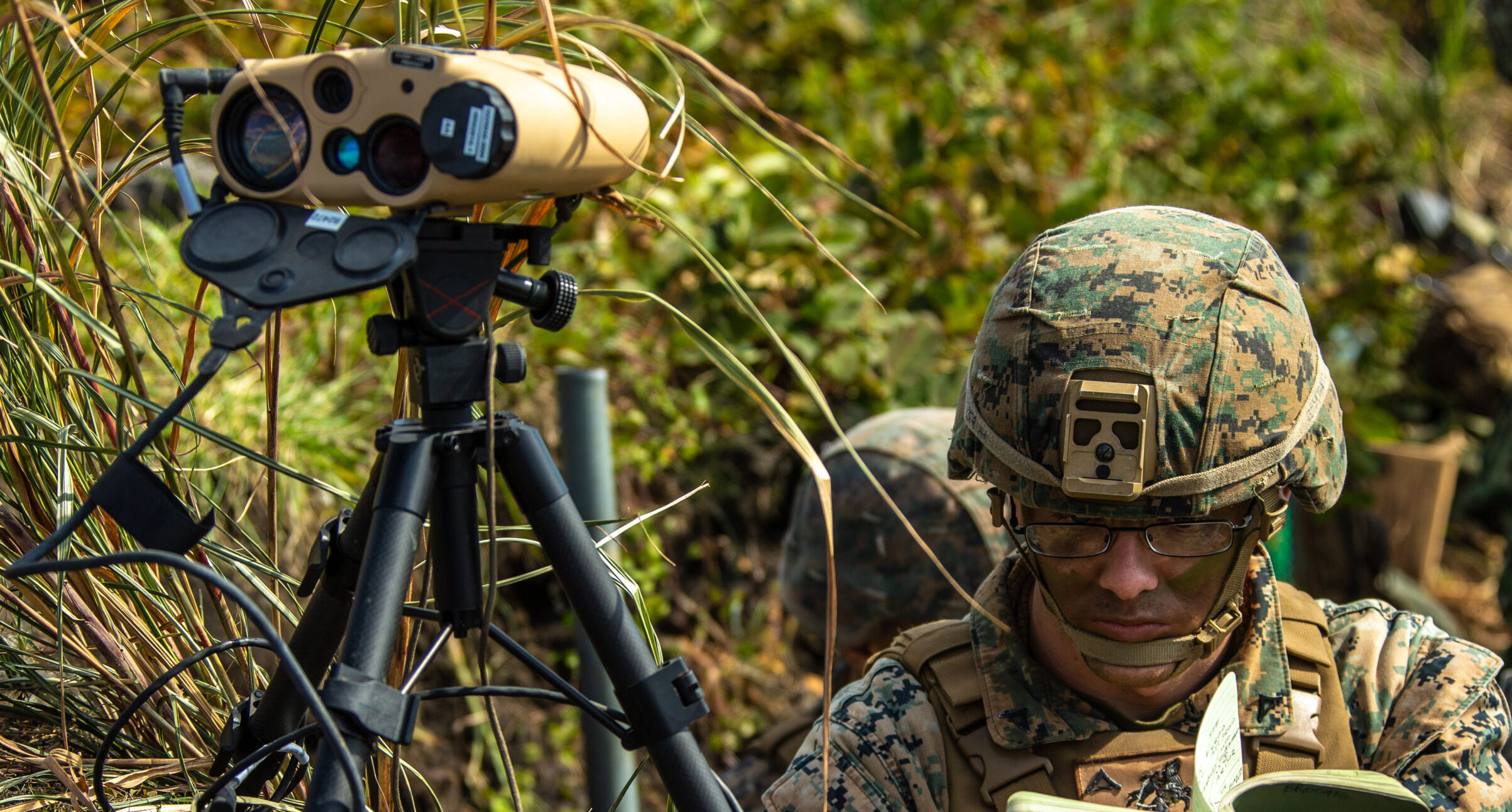
Made in New Hampshire by Elbit America, the Common Laser Range Finder-Integrated Capacity (CLRF-IC) gives dismounted Marines a handheld targeting system that integrates a rangefinder, day and night cameras, GPS, and celestial north finding to Forward Observers. Image courtesy of Department of Defense.
Several Red snipers found themselves at the business end of Sling mobile mortar systems firing Iron Sting guided mortar rounds when rifles weren’t enough firepower.
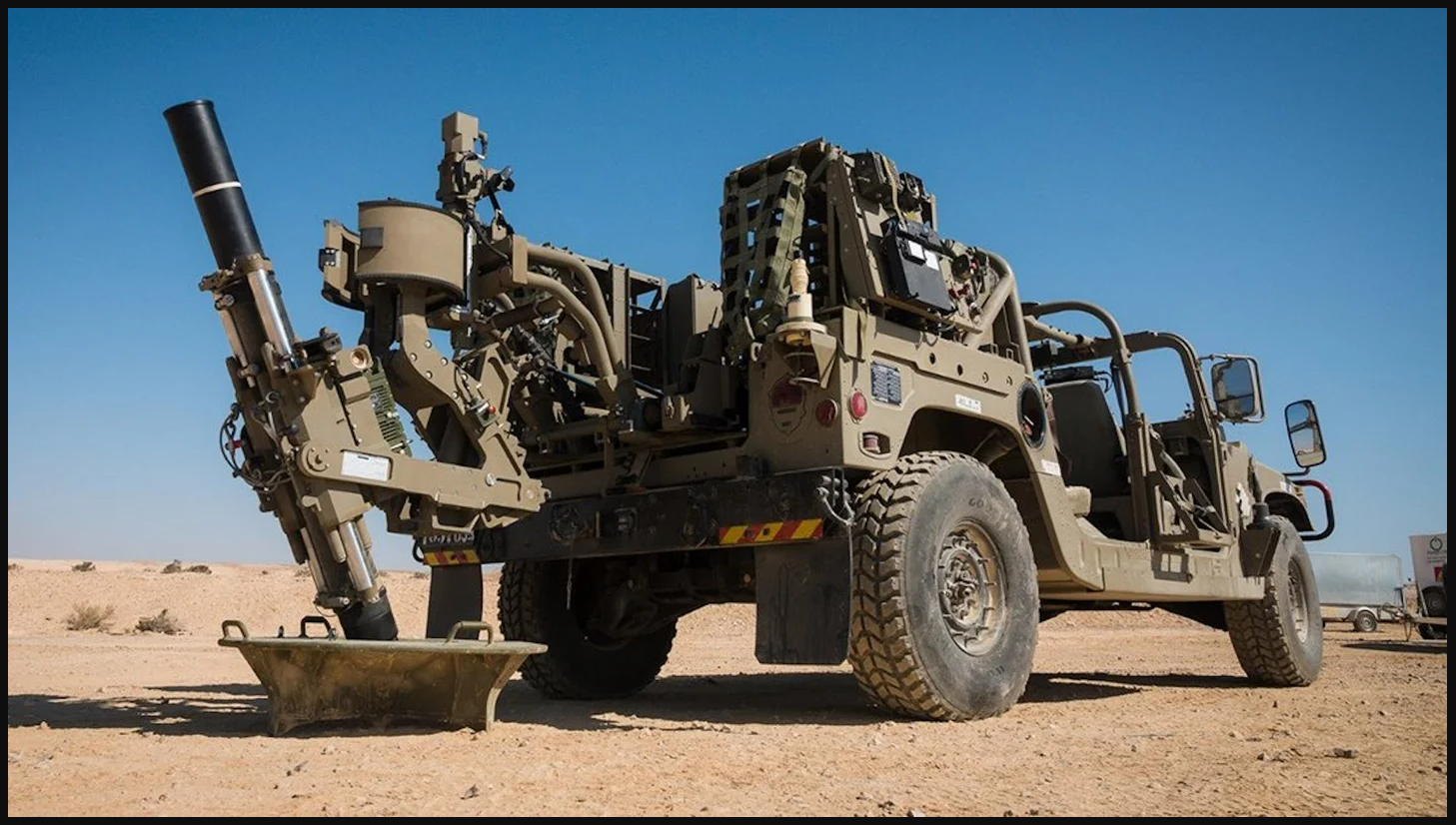
The SLING mobile mortar system gives Soldiers a rapidly deployable, precision indirect fire weapon with mobility for survivability. Image courtesy of Elbit America.
The same HTS could direct air-launched/dropped munitions as well if needed, but ultimately, they were not.
Achieving their objective, Blue forces began sweeping and clearing every building down to their lowest levels. They used their helmet-mounted goggles to provide situational awareness with their thermal cameras and image intensifying capabilities in the subterranean darkness. In the basements of several buildings they finally found what they were looking for – the southern terminus of the tunnels from the DMZ.
Calculating that the last remaining insurgents were holed up inside, it was decided to send unarmed robots into the tunnels to make contact. The robots carried radios that would allow translators to attempt communication with the insurgents and try to convince them to surrender. The robot’s sensors provided imagery back to the Soldiers and Marines, who consumed it via their wearable AR displays, enjoying situational awareness that the insurgents did not.
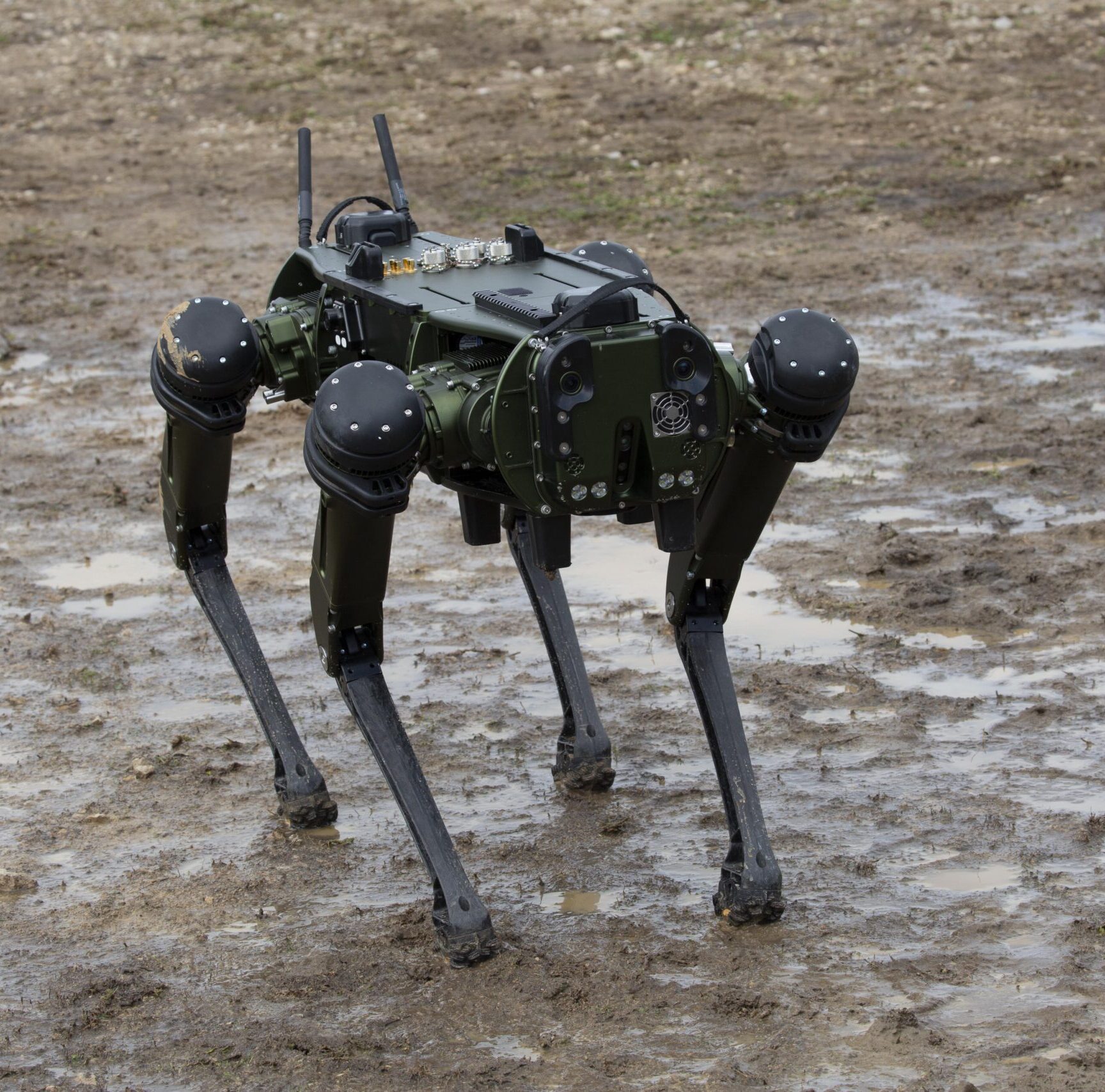
Elbit America is working with Ghost Robotics to develop a system-of-systems solutions for the Marine Corps M/A-DOSS needs, providing persistent surveillance through unmanned and unattended systems support small numbers of Marines. These “devil dogs” could also be used to scout urban and subterranean areas where it is initially too risky to send humans. Image courtesy of Elbit America.
First, the insurgents shot at the robots, then they ignored them, then they cursed them, and finally they defiantly communicated with the Blue forces through them. But before the Soldiers and Marines could properly instruct Blue about possible course of actions, shots rang out from deep within the tunnels. An insurgent then announced they were surrendering and would come out “with their hands up.” Warily, the Blue forces permitted it and, fortunately, the remaining insurgents did just that.
The battle for the mid-sized city was over; order had in fact been restored to the Red exclave.








